UPSC GS 1
World Drug Report 2024
- News: The United Nations Office on Drugs and Crime has published the World Drug Report 2024.
- World Drug Report: This annual report by the United Nations Office on Drugs and Crime (UNODC) provides an overview of global, regional, and subregional trends in drug demand and supply.
- Key Findings:
- Increase in Illicit Drug Use: The UNODC report highlights a significant increase in the number of people using illicit drugs, reaching 292 million by 2022.
- Drug Consumption Patterns: Cannabis remains the most widely consumed illicit drug globally, with 228 million users.
- Impact of Nitazenes: The emergence of nitazenes, a group of synthetic opioids more potent than fentanyl, has led to an increase in overdose deaths in several high-income countries.
- Criminal Integration in the Golden Triangle: Traffickers in the Golden Triangle region of Southeast Asia have diversified into various illegal markets, including wildlife trafficking, financial fraud, and illegal resource extraction.
- Gender Disparity: Though an estimated 64 million people worldwide suffer from drug use disorders, only 1 in 11 is in treatment. Women receive less access to treatment than men, with only one in 18 women with drug use disorders in treatment versus one in seven men.
- International Day against Drug Abuse and Illicit Trafficking/World Drug Day 2024:
-
- Day: Every year, World Drug Day is observed on June 26.
- History: By resolution on 7 December 1987, the UN General Assembly decided to observe 26 June as the International Day against Drug Abuse and Illicit Trafficking.
- Aim: To raise awareness about the impact of drug abuse and its trafficking on individuals, families and communities across the world.
- Theme: The theme for World Drug Day 2024 is “The evidence is clear: Invest in prevention”.
-
Read also: Best IAS Coaching In Laxmi Nagar, Delhi
Saryu (Sarju) River
- News: An artificial lake formed in the Saryu river in Bageshwar remains a “significant threat” as efforts to drain it have failed for the second consecutive day.
- Definition: The Saryu River flows through the Indian states of Uttarakhand and Uttar Pradesh.
- Importance:
- Ancient Mention:
-
- The Saryu River is noted in ancient texts such as the Vedas and the Ramayana.
-
- Ayodhya Connection:
-
- Ayodhya, the birthplace of Lord Rama according to Hindu mythology, is situated on the banks of the river Sarayu.
-
- Important Site:
-
- Ram ki Paidi is a series of ghats on the bank of River Saryu.
-
- Course:
- Origin: The river Sarayu originates at Sarmool which is located in the Bageshwar district of Uttarakhand.
- Path: It flows through towns like Kapkot, Bageshwar, and Seraghat before merging with the Sharada River at Pancheshwar, near the India-Nepal border.
- Tributary: The Sarayu is the largest tributary of the Sharda River.
- Merge and Flow: The Sharada River, also known as Kali River, eventually joins the Ghaghara River in Sitapur District, Uttar Pradesh.
- Name Change: The lower course of the Ghaghara River is popularly known as Sarayu in India, particularly as it flows through Ayodhya.
Swami Vivekananda
- News: Prime Minister Narendra Modi paid homage to Swami Vivekananda on his death anniversary today (July 4).
- Early Life:
-
- Swami Vivekananda was born on January 12, 1863, in Kolkata, West Bengal.
- His full name was Narendranath Datta.
-
- Influence:
-
- He was the chief disciple of the Indian mystic Ramakrishna Paramhans.
- Swami Vivekananda was deeply interested in spiritualism and Vedanta.
- He was proud to be a Hindu because he believed that Hinduism was the only religion that fully recognized that all religions are expressions of the same truth and that the differences between them are merely circumstantial.
-

- Notable Achievements:
-
- Swami Vivekananda became widely known for his participation in the 1893 Parliament of Religions in Chicago, where he delivered his famous speech beginning with “Sisters and brothers of America…”.
- In 1899, he established Belur Math, where he later died in 1902.
- He also founded the Ramakrishna Math and Ramakrishna Mission in 1897 to serve the poor and spread the Vedanta philosophy.
- Swami Vivekananda popularized Indian culture globally.
-
- Legacy:
-
- India observes National Youth Day on his birthday, January 12, to honor his contributions and legacy.
- Swami Vivekananda died on July 4, 1902, at the age of 39.
-
UPSC GS 2
National Test House (NTH)
- News: Centre plans to make National Test House as apex certification body for all Indian products.
- History: The National Test House, initially known as the Government Test House, has a long history that began in 1912.
- Current Status: The NTH operates as a subordinate office under the Ministry of Consumer Affairs, Food & Public Distribution, and the Department of Consumer Affairs in India.
- Role: It stands as India’s largest and most diverse central government testing laboratory.
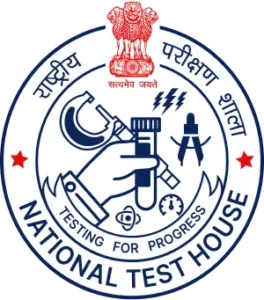
- Functions:
-
- Testing and Evaluation: Currently, NTH provides testing, evaluation, and calibration services for both raw materials and finished products. These services are available at its branches located in Kolkata, Mumbai, Chennai, Ghaziabad, Jaipur, Guwahati, and Varanasi .
- Welder Certification: Provides certification for welders under the Central Authority for Testing and Certification of Welders.
- Industry Support: Assists industries in creating local products for export and import substitution, and supports their quality assurance initiatives.
- Standards Development: Collaborates with the Bureau of Indian Standards (BIS) in developing national standards.
- Research and Development: Assists industries and user organizations in R&D projects related to test engineering.
- Accreditation Support: Aids the National Accreditation Board for Testing & Calibration Laboratories (NABL) in accrediting testing and calibration laboratories throughout the country.
-
Education
- News: The NEET-UG exam has faced controversies involving the award of grace marks, allegations of paper leaks, and other irregularities.
- Historical Background: Education
- Government of India Act, 1935:
-
- The Act created a federal structure in India for the first time.
- Legislative subjects were distributed between the federal legislature (Union) and provinces (States).
- Education was placed under the provincial list.
-
- Post-Independence(7th Schedule):
-
- The 7th Schedule of India’s Constitution allocated powers and functions to the Centre and States through 3 Lists:
- Union List
- State List
- Concurrent List
- Education remained part of the ‘State list’ under the distribution of powers after independence.
-
- Emergency Period and the Swaran Singh Committee:
-
- During the Emergency, the Congress party formed the Swaran Singh Committee to recommend constitutional amendments.
- On the lines of the Committee’s recommendation, ‘education’ was shifted to Concurrent list from State list through the 42nd constitutional amendment (1976).
-
| Name of List | No. of Subjects | Important Subjects |
| Union List:
The Union Parliament has exclusive powers to make legislation on the matters included in the Union List. |
100 | External affairs, Defence, Communications, civil aviation, railways, inter-state trade and commerce, banking, currency, insurance etc. |
| State List:
The laws made by a particular state legislature on the subjects in state list apply to only that particular State. |
61 | Law and order, police, prison, Agriculture, land revenue, local government, public health, land liquor, state public services, and fisheries etc. |
| Concurrent List:
Both the Center and States can make laws on these subjects. The 42nd Constitutional Amendment Act 1976 shifted 5 subjects to this list from the State List. |
52 | Education, forests, electricity, weights and measures, adulteration, adoption and succession, trade unions etc. |
- Residuary Powers of Legislation:
-
- Article 248 of the Indian Constitution deals with the Residuary powers of legislation.
- The Residuary powers legislation is given to Center.
- Parliament of India alone can make legislation on the subjects not included in any of the above three lists.
- This residuary power consists of the power to levy any residuary taxes also.
-
- International Practices:
-
- United States:
- State and local governments set overall educational standards, mandate standardized tests, and supervise colleges and universities.
- The federal education department focuses on policies for financial aid, key educational issues, and ensuring equal access.
- Canada:
- Education is entirely managed by the provinces.
- Germany:
- The constitution grants legislative powers for education to the landers (States).
-
UPSC GS 3
Great Indian Bustard (GIB)
- News: Only around 140 Great Indian Bustards are left in India today.
- Definition: The Great Indian Bustard is a large bird found only in India.
- Scientific Name: Ardeotis nigriceps
- Habitat:
-
- The Great Indian Bustard is an agro-grassland bird endemic to the Indian Subcontinent.
- Locations: Found in Rajasthan (Desert National Park), Gujarat, Madhya Pradesh, Karnataka, Maharashtra and Andhra Pradesh in India, as well as parts of Pakistan.
- Preferred Environment: Inhabit dry grasslands and scrublands
-
- Characteristics:
-
- Size and Weight: It is one of the heaviest flying birds, weighing up to 15 kg (33 pounds).
- Height: Tall birds with long legs and long necks; the tallest individuals may stand up to 1.2 meters (4 feet) high.
- Sexual Dimorphism: Males and females are roughly the same size but can be distinguished by the color of their feathers.
- Diet: Omnivorous.
-
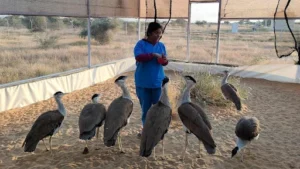
- Importance: The Great Indian Bustard is a key indicator species of the grassland habitat, which means its survival also signals the health of grassland habitats.
- Conservation Status:
-
- IUCN Red List: Critically Endangered species
- CITES: Listed in Appendix I
- Wildlife (Protection) Act, 1972: Listed under Schedule I.
-
- Conservation Programs in India:
-
- Recovery Programme: GIB has been identified as one of the species for the recovery programme under the Integrated Development of Wildlife Habitats of the Ministry of Environment and Forests, GoI.
- Conservation Breeding: The MoEFCC, the Rajasthan Forest Department, and WII have also started conservation breeding to preserve the GIB through scientific research and management.
-
Nomadic Elephant
- News: The joint military exercise ‘Nomadic Elephant’ between India and Mongolia has begun in Umroi, Meghalaya.
- Definition: The 16th edition of India-Mongolia Joint Military Exercise Nomadic Elephant is being held in Umroi (Meghalaya).
- Exercise Nomadic Elephant: It is an annual training event conducted alternatively in India and Mongolia.
- Aim:
-
- To enhance joint military capability of both sides for counter insurgency operations in a Sub Conventional scenario under Chapter VII of the United Nations Mandate.
- Focus on operations in semi-urban and mountainous terrain.
-
- Participants:
-
- India: Indian Army personnel from the Sikkim Scouts
- Mongolia: Quick Reaction Force Battalion
-
- Activities: Tactical drills during the exercise include:
-
- Response to a terrorist action
- Establishment of a joint command post
- Establishment of an intelligence and surveillance centre
- Securing of a helipad or landing site, small team insertion and extraction
-
Exercise MAITREE
- News: Indian Army contingent departed to take part in the India-Thailand joint military Exercise MAITREE.
- About Exercise MAITREE
- Edition: This is the 13th edition of the India-Thailand joint military Exercise MAITREE.
- Dates: The exercise is scheduled to be conducted from 1st to 15th July 2024.
- Location: Fort Vachiraprakan in Tak Province, Thailand.
- Previous Edition: The last edition was conducted at Umroi, Meghalaya in September 2019.
- Participants:
-
- The Indian Army contingent comprising 76 personnel is being represented mainly by a Battalion of the Ladakh Scouts.
- The Royal Thailand Army contingent also comprises 76 personnel mainly from 1st Battalion, 14 Infantry Regiment of 4 Division.
-
Ladakh Scouts
|
- Aim:
-
- The aim of Exercise MAITREE is to foster military cooperation between India and Thailand.
- To enhance combined capabilities in executing joint counter-insurgency operations in jungle and urban environments under Chapter VII of the United Nations Charter.
- The focus will be on achieving a high degree of physical fitness, joint planning, and joint tactical drills.
-
- Activities: Tactical drills to be practiced during the exercise include:
-
- Creation of a Joint Operation Centre
- Establishing an Intelligence & Surveillance Centre
- Employment of drones and counter-drone systems
- Securing a landing site
- Small team insertion and extraction
- Special heliborne operations
- Cordon and search operations
- Room intervention drills
- Demolition of illegal structures
-
Zinc
- News: Researchers in France have discovered that zinc plays a crucial role in the health of legume crops.
- Physical Properties: Zinc is a silvery blue-grey metal with a relatively low melting and boiling point.
- Occurrence:
-
- Zinc and lead often occur together in ores, along with other metals such as silver and cadmium.
- It is the fourth most widely used metal in the world, after steel, aluminum, and copper.
-

- Reserves in India:
-
- India is self-sufficient in zinc production.
- In India, the largest reserves of lead-zinc ore are in Rajasthan, followed by Andhra Pradesh (3.03%), Madhya Pradesh (1.98%), and Bihar.
-

- Global Reserves
-
- Australia: Holds 27% of the world’s zinc reserves.
- China: Accounts for 18%.
- Russia & Mexico: Each hold 9%.
- Peru: Contains 8%.
- Kazakhstan: Holds 5%.
- USA: Accounts for 4%.
-
- Uses:
-
- Galvanizing Industry: The largest consumer of zinc, due to its corrosion resistance, used for protecting steel through galvanizing.
- Die-Castings: Significant quantities of zinc are used in the automobile, electrical, and hardware industries to produce die-castings.
- Zinc Oxide: Utilized in the production of various products such as paints and rubber.
- Green Technologies: It plays a critical role in enabling green technologies such as solar and wind power. Zinc-ion batteries are also considered safer than lithium-ion batteries for use in electric vehicles.
-
- Biological Role:
-
- Zinc is a trace mineral required by the body in small amounts as the human body does not make it on its own.
- Zinc plays a crucial role in DNA synthesis, cell growth, protein formation, tissue repair, and immune system support.
-
- How Does Zinc Play a Crucial Role In The Health Of Legume Crops?
-
- Zinc in plants aids in nitrogen fixation, a process where atmospheric nitrogen is converted into ammonia, an essential nutrient for plants.
- Legume crops form a symbiotic relationship with rhizobia, a bacteria that fixes atmospheric nitrogen in root nodules.
- However, these nodules are sensitive to environmental factors such as temperature, drought, flooding, soil salinity, and high soil nitrogen levels.
- Central to this discovery is the role of the transcriptional regulator ‘Fixation Under Nitrate (FUN’), identified as a novel zinc sensor within legume nodules.
- FUN acts as a switch that controls nitrogen fixation efficiency based on zinc availability in the plant.
- When zinc levels are low, FUN enhances nitrogen fixation, ensuring sustained plant growth even under stress.
- Conversely, high zinc levels deactivate FUN, prompting nodule breakdown and conserving resources during periods of soil nitrogen abundance.
- By understanding how nitrogen fixation is regulated by zinc and FUN, we can increase nitrogen delivery to plants, improve crop yields, and reduce the need for synthetic fertilizers, which have significant environmental and economic costs.
-
Senna Spectabilis
- News: Environmental organisations in Wayanad have urged the Forest department to maintain transparency in a project to extract Senna spectabilis.
- Family: Senna spectabilis belongs to the legume family.
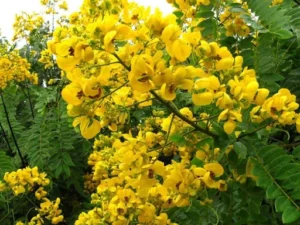
- Native Habitat: It is a medium to large tree native to South and Central America.

- Ornamental Value: Grown for its bright yellow flowers, Senna spectabilis is popular as an ornamental plant.
- Growth Characteristics: Known for its fast growth, especially in deep soils. It is fire- and termite-resistant and can tolerate strongly acidic soils.
- Utilization: Often planted for fuelwood, as an ornamental plant, and as a shade tree in agroforestry systems.
- Invasive Status: Classified as an Invasive Alien Species (IAS) in India and considered an environmental weed by the Global Compendium of Weeds.
- Introduction in India: Introduced initially as shade trees for coffee and for firewood, but its dense foliage has posed a threat to native tree species and grasses by inhibiting their growth.
- Conservation Status: Classified as Least Concern under the IUCN Red List.
Read also: Green Technologies: Meaning, Types, Opportunities and Challenges | UPSC
Xenophrys Apatani
- News: A team of researchers from the Zoological Survey of India (ZSI) has recorded a new species of forest-dwelling horned frog in Arunachal Pradesh.
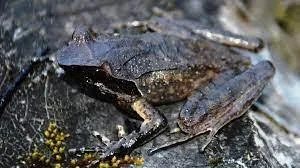
- Definition: It is a new species of forest-dwelling horned frog.
- Nomenclature: The frog species has been named after the state’s Apatani tribe – Xenophrys apatani in recognition of their ingenuity in the conservation of wild flora and fauna.
- Distribution: In India, this frog species is distributed along the Eastern Himalayas and Indo-Burma biodiversity hotspots of the country.
-
- Apatani Community:
- Definition: The Apatani are a tribal group of people living in the Ziro valley in the Lower Subansiri district of Arunachal Pradesh in India.
- Festivals: The Apatani tribe celebrates two major festivals:
- Dree Festival: Celebrated in July, Dree is an agricultural festival where prayers are offered for a prosperous harvest and the well-being of all humanity. Cultural programs such as Pakhu-Itu, Daminda, and Pree dance are central to the festivities.
- Myoko Festival: Spanning almost a month from late March to late April, Myoko is a festival celebrating friendship, akin to modern Friendship Day but extended over a longer period.
-
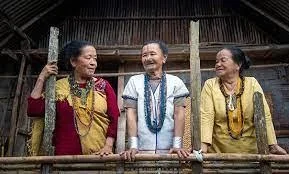
-
-
- Patrilineally: They trace their descent patrilineally and are renowned for their vibrant culture which includes intricate handloom designs, skills in cane and bamboo crafts.
- Bulyañ: They have traditional village councils known as bulyañ.
- Language: They speak Tani, a local language.
- Traditional Farming:
-
- Since the 1960s, the Apatani have practiced integrated rice-fish farming on their mountain terraces in Arunachal Pradesh.
- They primarily cultivate three rice varieties: Emeo, Pyape, and Mypia.
-
-
Tale Valley Wildlife Sanctuary
- News: A team of researchers from the Zoological Survey of India recorded the forest-dwelling frog from the Talle Wildlife Sanctuary.
- Location: Talley Valley Wildlife Sanctuary is a wildlife sanctuary in Lower Subansiri District, Arunachal Pradesh, India.
- Landscape: The sanctuary lies roughly in between the Subansiri, Sipu and Pange rivers.
- Fauna: Indian elephant, Flying squirrel, Giant squirrel, Himalayan black bear, Indian porcupine, Indian pangolin, Jungle cat, Leopard, Leopard cat, Clouded leopard, Palm civet, Wild boar, Slow loris, Tiger, Wild dog, Other, Wild buffalo, Gaur among others.
- Flora: Alpine forests like silver fir trees, ferns, orchids, bamboo, and rhododendron.

